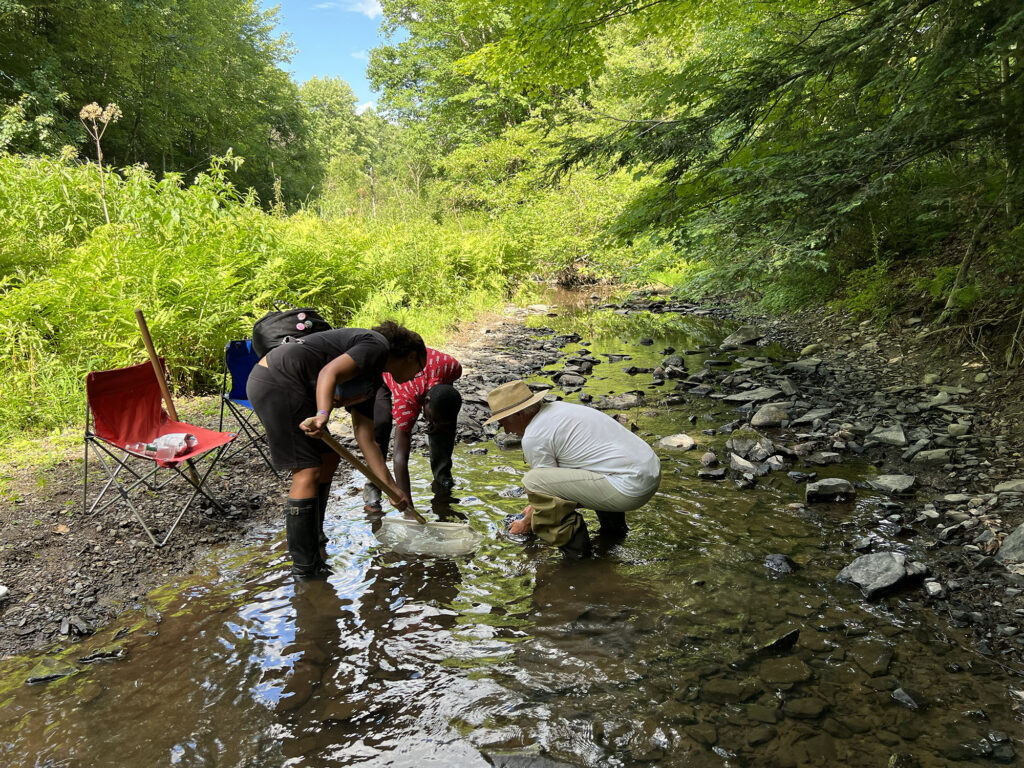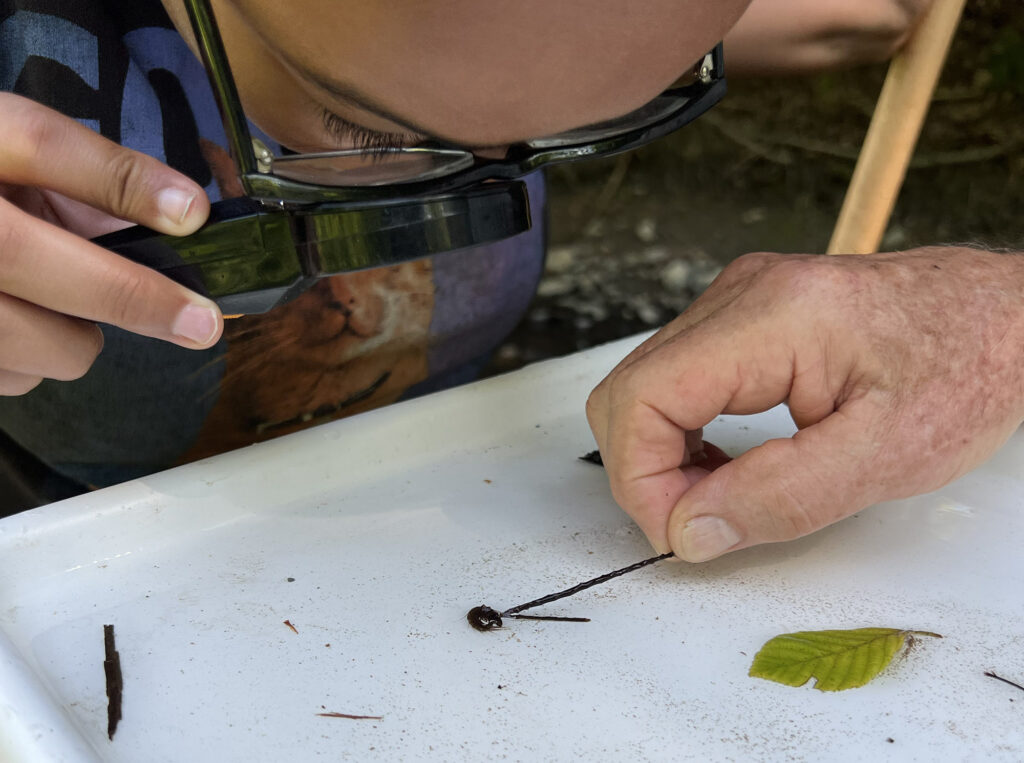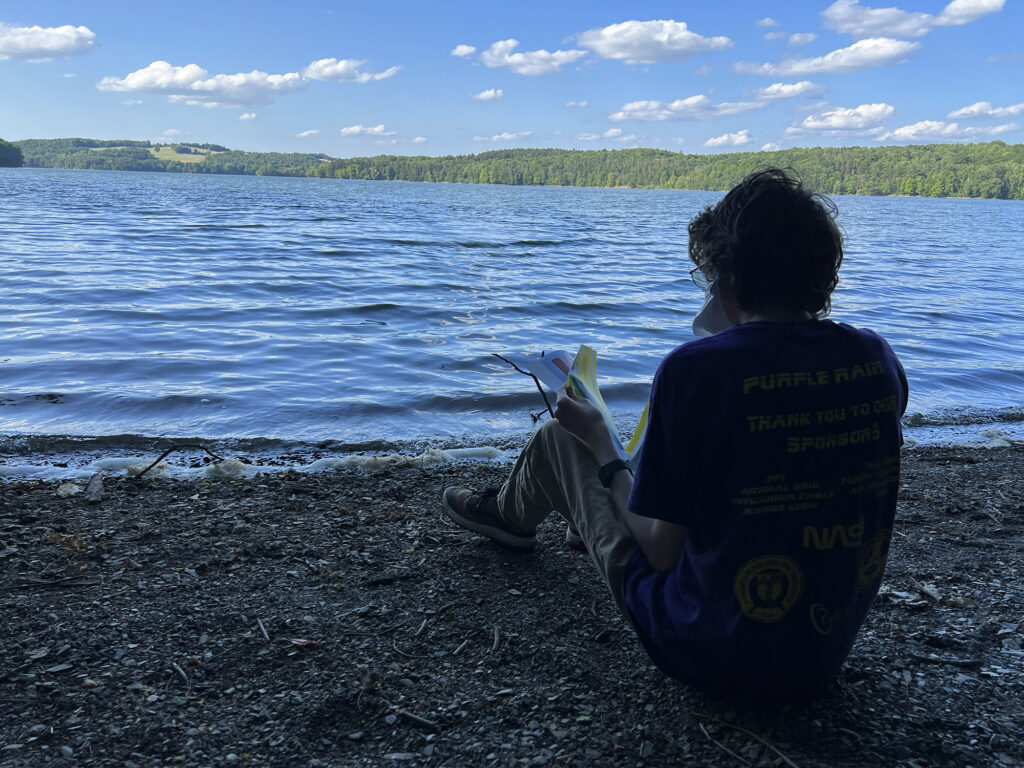
This session of Water Justice Summer Camp was held on banks of Otter Creek and the Tomhannock Reservoir in the northwestern portion of Rensselaer County. Fellows learned macroinvertebrate sampling techniques from Doug Reed, who has been sampling streams in the greater Capitol Region for decades, and is a volunteer for Riverkeeper’s water quality monitoring team. Fellows sampled along Otter Creek, a tributary to the Tomhannock Reservoir, which supplies drinking water for Troy and other local municipalities. The portion of Otter Creek we visited passes through land conserved by The Rensselaer Land Trust. Fellows also recorded ambient sound and an interview with Doug, embedded below.

Working with Doug, fellows caught and identified a range of macroinvertebrates that are indicators of good water quality, like mayflies, stoneflies, hellgrammites, and crayfish of all sizes! This indicates a healthy stream, and it was a very pleasant place to hang out for the afternoon. Fellows also did a listening exercise, and recorded environmental sound for use in radio pieces. We worked with equipment lent by Doug, Trout Unlimited’s Chapter 586 and the DEC’s WAVE program. This relatively rural stream, with good tree cover and some nearby agriculture, will provide a point of comparison for more urban and heavily disturbed streams visited during later sampling trips.

After we wrapped up sampling, we drove downstream and met Kristina Younger of the Rensselaer Land Trust on the banks of the Tomhannock. Kristina talked to us about RLT’s work conserving land that impacts local water quality (their Source Water Protection Program). The reservoir doesn’t allow boats of any kind, and the only recreational activity permitted is fishing from the banks. Preventing development in the watershed surrounding the reservoir is an important aspect of protecting water quality into the future. As we learned, one of the main threats to the reservoir’s water quality comes not from nutrient runoff from local farms, but from the lawn-care practices of large estates that line the southwest side of the reservoir. Fertilizer that keeps lawns looking green runs off into the reservoir in large enough amounts that it has caused harmful algal blooms. The fast-growing Eurasian water chestnut is also present in the reservoir and creates problems for water quality. During our next session, we’ll go a little future downstream to visit the drinking water treatment plant that has to deal with these issues! More photos and information from the day are posted here.
